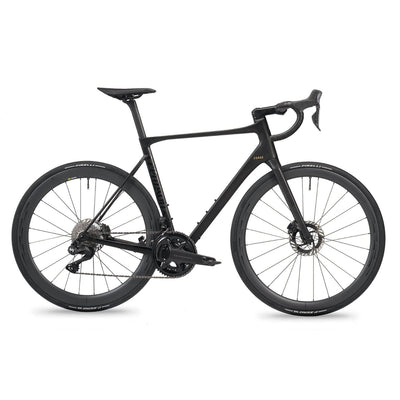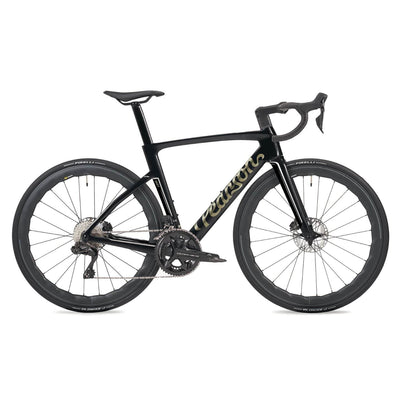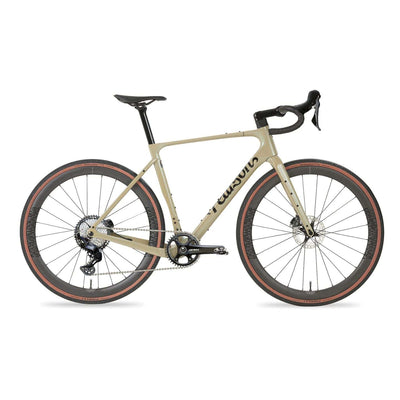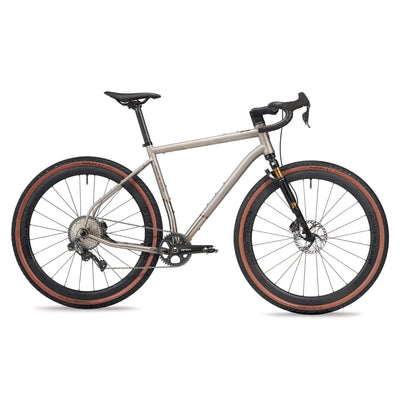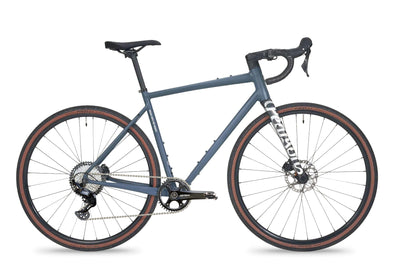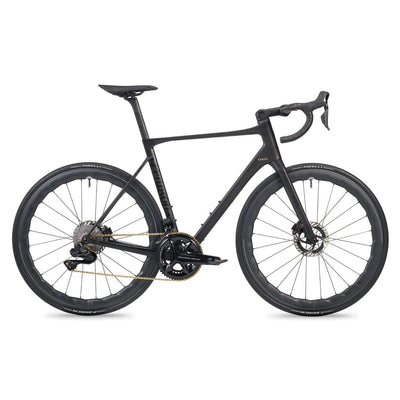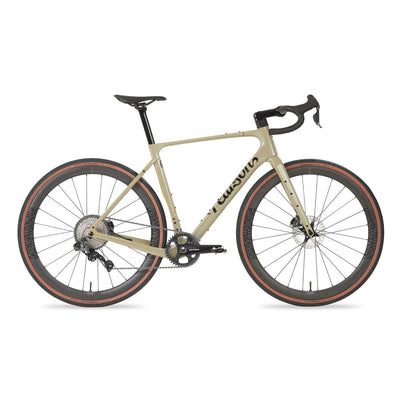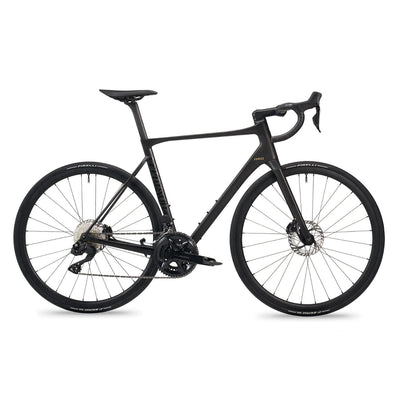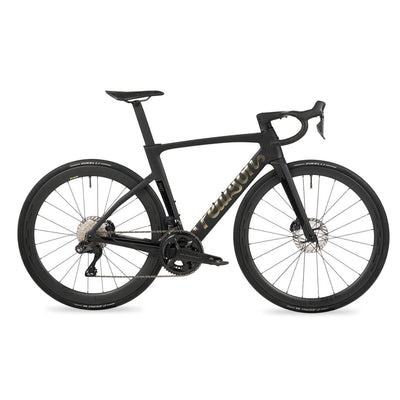It Takes Two. Optimise Winter Training On Road and Gravel.
As winter continues, cyclists face a significant decision for early-season training: should you stick with your trusty road bike, embrace the adventurous world of gravel riding, or is it both?
In this guide, we'll delve into the factors to consider when choosing your weapon of choice. We'll explore the advantages of riding both road and gravel, the key differences between the bikes, taking into account weather conditions, safety, tyre pressures, maintaining body warmth, clothing selection, GPS route planning, and how to best prepare for a successful spring season.

Bike Choice: Road vs. Gravel
The choice of your bike is the cornerstone of your winter training experience. As many will know, road bikes are designed primarily for smoother surfaces, offering efficiency and speed. However, they can be less forgiving when the going gets rough or slippery, making them less ideal for winter conditions. Gravel bikes, on the other hand, are built for versatility. For those who question the difference, here's how they differ:
Road Bikes:
- Designed for roads, offering aero efficiency and speed.
- Typically feature narrow tyres with minimal tread.
- May have limited clearance, making it challenging to accommodate wider winter tyres.
Gravel Bikes:
- Built for versatility, with wider tyre clearance and more robust frames.
- Equipped with wider tyres that provide better traction on gravel, dirt, and frosty surfaces.
- Offer a more comfortable and sustainable riding position.
However, it's essential to remember that the ideal choice often depends on the weather and temperature conditions. In the UK's ever-changing climate, it might be most beneficial to have the best of both worlds – a road bike and a gravel bike. Such news is typically not well-received at home, however, the upsides for the rider is clear.

The Best of Both Worlds
A dual-bike strategy allows you to choose the most suitable bike according to the prevailing conditions in weather and temperature. Here's how combining both types of bikes can benefit your winter training:
When the weather is clear, and surfaces are drier, your road bike provides a smooth and efficient riding experience. You'll benefit from working on speed and can offer enhanced training when with a group, especially if you're not the quickest present. An ideal choice for crisp, clear winter days, when the air is fresh and visibility is good. Depending on altitude gain, a road ride typically covers longer distances and helps to build stamina and more consistent power outputs. The exhilaration of higher speeds also adds to the ‘buzz’ of cycling and often makes a ride complete.
When the weather turns inclement, and you expect wet, muddy, or uncertain surfaces, simply switch to your gravel bike. Its higher volume tyres and more commanding riding position will help to keep you in control, especially in slippery conditions. They also excel when temperatures drop and the tarmac is icy, a broader tyre on a road outing can instil more confidence when cornering, plus the extra resistance adds to your training, pushing that bit harder than would normally be required on a thinner tyre.

When riding off-road the extra resistance means that rides can be shorter for the same amount of calories burned and power expended. This is a great solution when time is short or temperatures are close to freezing when ride times are often governed by the numbness of your extremities! Gravel riding also improves your skills in bike handling, and explores new traffic-free routes, breathing cleaner air and immersed in the bosom of nature. Customers always remark on how the stresses of their every day simply dissolve as soon as they hit the trails.
By having both a road and gravel bike at your disposal, you can adapt to the ever-changing conditions and ensure a safer, more enjoyable winter training experience. Take into account the points below to ensure that you get the very best out of your time outdoors.

Weather and Temperature
Regardless of your bike choice, monitoring weather conditions is vital for a safe and enjoyable ride. Check the forecast and be prepared for sudden changes, colder temperatures require proper layering, while wet conditions demand quality waterproof gear.
Safety Precautions
Winter conditions can pose unique safety challenges for cyclists. Equip your bike with lights, reflectors, and high-visibility gear to enhance visibility, especially during low-light or foggy days. Mudguards can help minimise the spray of water and mud on your clothing.
Tyre Pressures
Tyre pressures play a critical role in your winter cycling experience. Lower tyre pressures provide better grip on slippery surfaces, enhancing traction and control. Gravel bike riders can take advantage of wider tyres and lower pressures to navigate challenging terrain more comfortably. However, unless you are using tubeless systems, it's essential to strike a balance between, grip and avoiding pinch flats, so experiment with different pressures to find what works best for your chosen terrain.
Maintaining Body Warmth
Staying warm is essential for both comfort and safety during winter rides. To combat the cold, invest in quality base layers that wick away sweat, insulating layers for warmth, and windproof and waterproof outerwear to protect against the elements. Ensure your extremities are covered with high-quality gloves, shoe covers, and a warm hat. Gravel bike riders, who often venture into less-travelled terrain, must prioritise warmth and protection from the elements.
Appropriate Clothing
Selecting the right clothing is crucial for a comfortable and safe winter cycling experience. High-quality, moisture-wicking, and thermal cycling apparel are essential investments. Windproof and waterproof options are critical to protecting against the UK's often wet and chilly conditions. Layering allows you to adapt to changing conditions, and waterproof gear can be a game-changer on wet and snowy rides.
GPS Route Planning
Planning your training routes by using GPS devices or smartphone apps to create routes tailored to your training goals and road conditions. Gravel bike enthusiasts may want to explore off-road trails and less-travelled routes, which require careful navigation and route planning. Always remain flexible with your plans and prepare to divert if conditions turn against you.

In the debate between road and gravel bikes for early-season winter training, by combining both types of bikes allows a more enjoyable and productive winter training experience.
Prioritise safety, monitor weather conditions, adjust tyre pressures, stay warm with appropriate clothing, and plan your routes. Embrace the challenges and enjoy the rewards of dedicated winter riding. Stay safe, stay warm, and savour every ride!
Read next: The Benefits of Riding Early Season Sportives >
.

